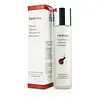What's inside
What's inside
 Key Ingredients
Key Ingredients

 Benefits
Benefits

 Concerns
Concerns

 Ingredients Side-by-side
Ingredients Side-by-side

Water
Skin ConditioningParaffinum Liquidum
EmollientGlycerin
HumectantCaprylic/Capric Triglyceride
MaskingPolysorbate 60
EmulsifyingGlyceryl Stearate
EmollientVitis Vinifera Seed Oil
EmollientCetyl Alcohol
EmollientSnail Secretion Filtrate
Skin ConditioningChrysanthemum Indicum Callus Culture Extract
AntioxidantSorbitan Sesquioleate
EmulsifyingStearic Acid
CleansingDimethicone
EmollientCetearyl Alcohol
EmollientPhenoxyethanol
PreservativePanthenol
Skin ConditioningBetaine
HumectantSodium Hyaluronate
HumectantCarbomer
Emulsion StabilisingCitrus Aurantium Bergamia Fruit Oil
MaskingAllantoin
Skin ConditioningMyristyl Alcohol
EmollientCellulose Gum
Emulsion StabilisingDisodium EDTA
1,2-Hexanediol
Skin ConditioningParfum
MaskingWater, Paraffinum Liquidum, Glycerin, Caprylic/Capric Triglyceride, Polysorbate 60, Glyceryl Stearate, Vitis Vinifera Seed Oil, Cetyl Alcohol, Snail Secretion Filtrate, Chrysanthemum Indicum Callus Culture Extract, Sorbitan Sesquioleate, Stearic Acid, Dimethicone, Cetearyl Alcohol, Phenoxyethanol, Panthenol, Betaine, Sodium Hyaluronate, Carbomer, Citrus Aurantium Bergamia Fruit Oil, Allantoin, Myristyl Alcohol, Cellulose Gum, Disodium EDTA, 1,2-Hexanediol, Parfum
Water
Skin ConditioningSqualane
EmollientCyclomethicone
EmollientGlyceryl Stearate
EmollientBehenyl Alcohol
EmollientCaffeine
Skin ConditioningPalmitic Acid
EmollientStearic Acid
CleansingLecithin
EmollientSodium Hyaluronate
HumectantLauryl Alcohol
EmollientMyristyl Alcohol
EmollientCetyl Alcohol
EmollientDimethicone
EmollientCaprylyl Glycol
EmollientSorbic Acid
PreservativeCamellia Sinensis Polyphenols
AntioxidantResveratrol
AntioxidantCucumis Sativus Fruit Extract
EmollientBisabolol
MaskingChamomilla Recutita Flower Extract
MaskingHelianthus Annuus Flower
Skin ConditioningRosmarinus Officinalis Leaf Extract
AntimicrobialPolysorbate 20
EmulsifyingCarbomer
Emulsion StabilisingPotassium Hydroxide
BufferingPhenoxyethanol
PreservativeTetrasodium EDTA
Water, Squalane, Cyclomethicone, Glyceryl Stearate, Behenyl Alcohol, Caffeine, Palmitic Acid, Stearic Acid, Lecithin, Sodium Hyaluronate, Lauryl Alcohol, Myristyl Alcohol, Cetyl Alcohol, Dimethicone, Caprylyl Glycol, Sorbic Acid, Camellia Sinensis Polyphenols, Resveratrol, Cucumis Sativus Fruit Extract, Bisabolol, Chamomilla Recutita Flower Extract, Helianthus Annuus Flower, Rosmarinus Officinalis Leaf Extract, Polysorbate 20, Carbomer, Potassium Hydroxide, Phenoxyethanol, Tetrasodium EDTA
Ingredients Explained
These ingredients are found in both products.
Ingredients higher up in an ingredient list are typically present in a larger amount.
Carbomer is a polymer of acrylic acid. Its main role is to create a gel consistency.
A high amount of carbomer can cause pilling or balling up of products. Don't worry, most products contain 1% or less of carbomer.
Cetyl Alcohol is a fatty alcohol. Fatty Alcohols are most often used as an emollient or to thicken a product.
Its main roles are:
Though it has "alcohol" in the name, it is not related to denatured alcohol or ethyl alcohol.
The FDA allows products labeled "alcohol-free" to have fatty alcohols.
Learn more about Cetyl AlcoholDimethicone is a type of synthetic silicone created from natural materials such as quartz.
What it does:
Dimethicone comes in different viscosities:
Depending on the viscosity, dimethicone has different properties.
Ingredients lists don't always show which type is used, so we recommend reaching out to the brand if you have questions about the viscosity.
This ingredient is unlikely to cause irritation because it does not get absorbed into skin. However, people with silicone allergies should be careful about using this ingredient.
Note: Dimethicone may contribute to pilling. This is because it is not oil or water soluble, so pilling may occur when layered with products. When mixed with heavy oils in a formula, the outcome is also quite greasy.
Learn more about DimethiconeGlyceryl Stearate is a mix of glycerin and stearic acid.
It is used to stabilize the mixing of water and oil ingredients. By preventing these ingredients from separating, it can help elongate shelf life. It can also help thicken the product's texture.
As an emollient, it helps soften skin and supports barrier-replenishing ingredients.
In cosmetics, Glyceryl Stearate is often made from vegetable oils or synthetically produced.
This ingredient may not be fungal-acne safe
Fun fact: The human body also creates Glyceryl Stearate naturally.
Learn more about Glyceryl StearateMyristyl Alcohol is type of fatty alcohol. It is a white, waxy solid and insoluble in water.
As an emollient, it hydrates the skin by trapping moisture in.
Fatty Alcohols are most often used as an emollient or to thicken a product. They are usually derived from natural fats and oils and therefore do not have the same drying or irritating effect as solvent alcohols.
Learn more about Myristyl AlcoholPhenoxyethanol is a preservative that has germicide, antimicrobial, and aromatic properties. Studies show that phenoxyethanol can prevent microbial growth. By itself, it has a scent that is similar to that of a rose.
It's often used in formulations along with Caprylyl Glycol to preserve the shelf life of products.
Sodium Hyaluronate is hyaluronic acid's salt form. It is commonly derived from the sodium salt of hyaluronic acid.
Like hyaluronic acid, it is great at holding water and acts as a humectant. This makes it a great skin hydrating ingredient.
Sodium Hyaluronate is naturally occurring in our bodies and is mostly found in eye fluid and joints.
These are some other common types of Hyaluronic Acid:
Learn more about Sodium HyaluronateStearic Acid is a fatty acid. It is an emollient, emulsifier, and texture enhancer.
As an emollient, stearic acid helps soften skin. It aids the skin's protective barrier by preventing water loss. It also provides a gentle cleansing effect without stripping away natural oils.
Stearic acid may also be used to enhance the texture of products. It can add volume and stabilize ingredients such as water and oil. This can help water and oil ingredients from separating.
Sources of stearic acid include animal or vegetable fats/oils such as coconut or shea. It can be naturally found in butter, cocoa butter, shea butter, vegetable fats, and animal tallow.
This ingredient may not be Malassezia folliculitis, or fungal-acne safe.
Learn more about Stearic AcidWater. It's the most common cosmetic ingredient of all. You'll usually see it at the top of ingredient lists, meaning that it makes up the largest part of the product.
So why is it so popular? Water most often acts as a solvent - this means that it helps dissolve other ingredients into the formulation.
You'll also recognize water as that liquid we all need to stay alive. If you see this, drink a glass of water. Stay hydrated!
Learn more about Water